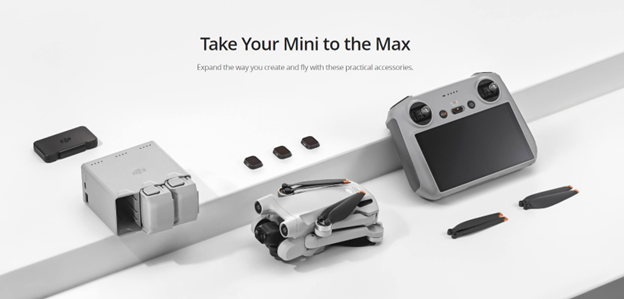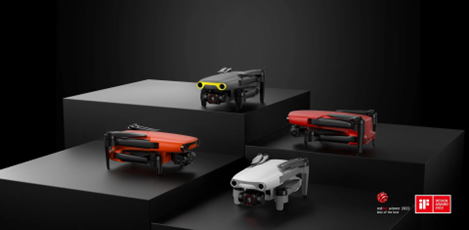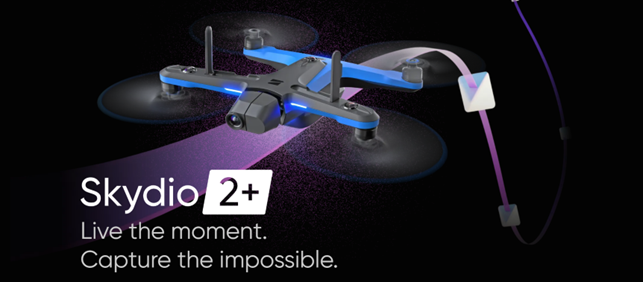Beginners guide on flying a professional drone
By Harin SamaranayakeWhat comes to your mind when you hear the term drone? If you are a beginner, you will get an image of a drone you saw at a toy store, or a complex device operated by professionals. Today I’m going to teach how you can become zero to hero in flying a professional drone.
What is a professional drone?
Drones can be categorized as toys vs professional drones. Toys drones are specifically designed for entertainment purposes. On the other hand, professional drones are designed to perform specific tasks, which include photography, videography, sensing, surveillance, agriculture, emergency services, etc. (Some fly professional drones for fun as well 😉) which makes them bit more complex to operate.
Getting started
If you are a beginner, I recommend buying a toy drone. It will cost under $50. The reason is that as a beginner the chances of damaging your first drone are relatively high.
First, it is mandatory to fully charge the batteries of drone and the remote before the flight. Next, you need to learn how to take off and land it safely. Once you get comfortable with these two operations try moving the drone forwards and backward. Later, you can practice moving the drone sideways. Most toy drones come with these movements as built-in features and therefore it’s easy to learn. I recommend practicing for at least 1-2 weeks with this drone.
Selecting an entry level professional drone
Once you practice thoroughly with the toy drone, the next step is to buy a professional one. Professional drones cost from $500 -$10,000+. But there is a separate set of drones called entry-level professional drones which are relatively lower in price (range from $450 - $1000) and easy to operate. Another plus point is that these drones weigh less than 250g, which makes them eligible to fly without any clearance from local authorities in several countries (In Sri Lanka registration is mandatory for any type of drone with the Civil Aviation Authority). Another point to remember is that every entry-level professional drone is focused on photography and videography.
There are several professional drones manufactures, and the below list indicates some of them (My personal preference for entry-level drones is also listed)
- DJI - Mini 3 Pro < 250g
- Autel - Evo Nano, Evo Nano + < 250g
- Skydio - Skydio 2+ > 250g

Mini 3 Pro from DJI
Image source - https://www.dji.com/mini-3-pro

Evo Nano Series from Autel Robotics
Image source - https://www.autelrobotics.com/productdetail/evo-nano-series-drones.html

Skydio 2+ from Skydio
Image source - https://www.skydio.com/skydio-2-plus
Let’s fly
Below are the steps you should follow when flying the drone for the first time.
- Get clearance from the local authorities.
- Insure the drone. Most drone manufacturers provide this option with a small annual subscription (DJI Care Refresh, Autel Robotics Care, etc.).
- Read the user guide carefully.
- Make sure batteries are fully charged, both on the drone and the remote.
- If your drone came with prop guards, apply them before the flight (keep the prop guards on until you’re comfortable with the device).
- Take the drone to an indoor space without any obstacles to reduce wind resistance (like a badminton court).
- Practice the basic movements like take-off, hover, landing, moving forward, backward, and going in sideways.
- Try taking images and videos in mid-flight.
- Once you are comfortable with the basic operations you can try it outdoors.
- If the drone doesn’t have the feature of returning to the take-off point, don’t let it move away from your eyesight.
Becoming a pro
There is only one golden rule that will make you a pro. It’s called practice. Without practice even though you have the best drone in the world it won’t help in becoming a professional.
Fly your drone as much as possible. Try taking clips in different environmental settings. See how other pilots operate their drones. Keep an eye on the manufacturer’s website for software and hardware updates. It’s better if you can join a local community or an online group with drone enthusiasts. Practice for at least 6 months.
What’s next?
Congratulations! Now you are a professional drone pilot. Starting with a toy drone, you learned how to fly an entry-level professional drone. At this stage, if you followed the above guidelines properly, you know exactly what the next step is. That is you know exactly what will be your next professional drone and you have the confidence that you can fly it safely. It’s based on the wisdom you get by practicing. Therefore, moving forward is all on you 😉
Hoping to see amazing content from you in the comments section. Until next time happy flying.

